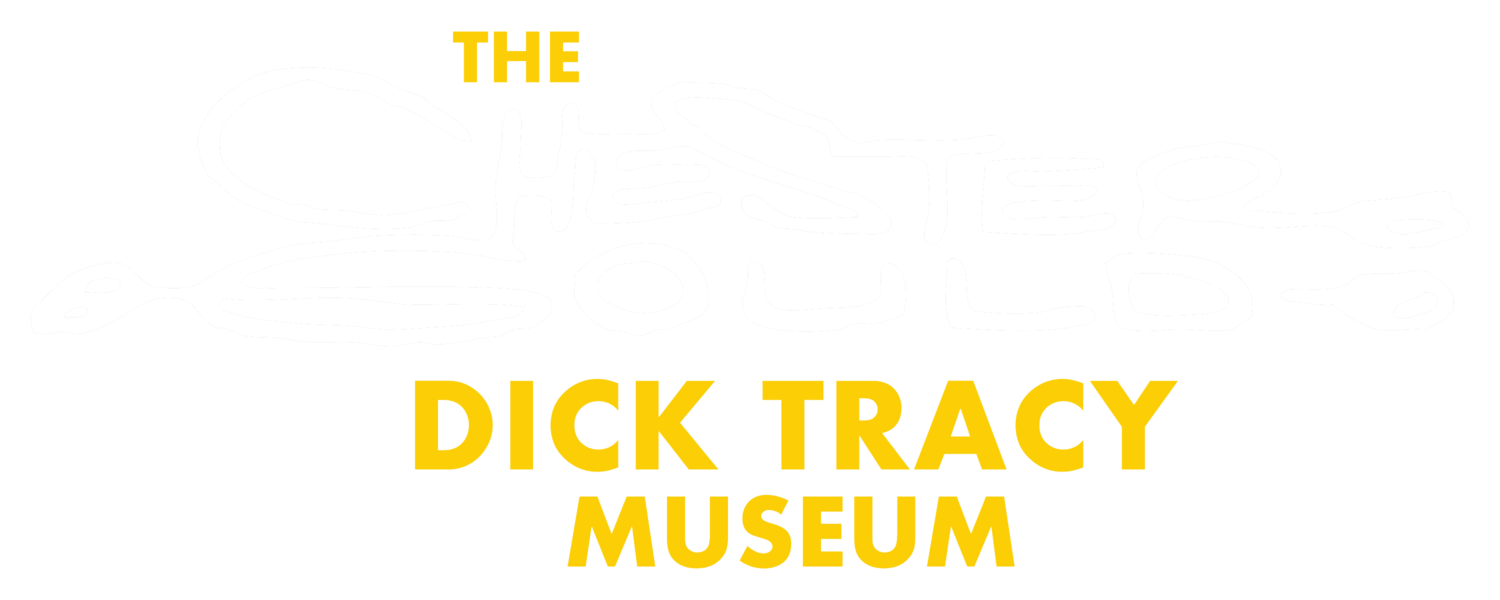“Calling All Crime Stoppers!”
In 1947, Chester Gould introduced Crime Stoppers (originally spelled as two words) in the Dick Tracy comic strip.
In the strip, Junior, Dick Tracy’s adopted son, and three of his friends, hurriedly entered police headquarters anxious to talk to Tracy. Junior handed him a piece of paper on which he had drawn a shield inscribed with the words “Crime Stoppers” saying, “We’re going to call ourselves Crime Stoppers.” This was the beginning of a well-recognized term today.
Junior and his friends told Tracy they felt they could do a lot of good helping kids who might go wrong before they got started, by finding odd jobs for them to do after school and to be friends with them. Junior could see that idleness meant trouble for a lot of kids. Their idea was to be sort of a detective club of helping hands.
One boy they had in mind in the story, Bronk, was already in trouble. He had stolen a bike and was getting involved with the criminal element.
So impressed was Tracy with the idea that he took Junior and his friends into the police crime laboratory and showed them where many clues were discovered through scientific crime detection, or, forensics. He even offered to meet with them in the lab once a week to show them how some of this equipment was used, and above all, to make sure they learned how to be keen observers.
These enthusiastic “Crime Stoppers” learned well and played an important part in aiding the police in a number of stories in the strip. They also befriended Bronk, helped him turn his life around, and he eventually became a “Crime Stopper.”
The same year “Crime Stoppers” appeared in the Dick Tracy strip, something was happening in Chester Gould’s hometown, Woodstock, Illinois. This quiet little farm town, population 7,000 in 1947, and situated sixty miles northwest of Chicago, had one police car. The Town Square was foot-patrolled by policemen. However, a stranger would think twice about confronting Woodstock’s 400 pound Police Chief, Emery “Tiny” Hansman, who was an impressive man in stature, and who could ride a motorcycle with the greatest agility. He was also a man who cared about Woodstock’s youth.
Getting together one day, he and Gould came up with an idea that developed into a Crime Stoppers program for Woodstock’s youngsters. This program was filled with direction, inspiration and activity. As it was, there was no outside activity available for young people, and Tiny knew that they needed something. Besides, while children were having fun and learning the importance of being good citizens, they would get a chance to know the policemen on the beat.
Tiny and Gould with a group of Crime Stoppers during a meeting in the Opera House.
Tiny and three policemen in the department laid out the plans for meetings to be held every Saturday morning. When the news got out about a Crime Stoppers program with a Crime Stoppers badge that could be earned and prizes to be won, the Opera House auditorium suddenly became packed with youngsters who attended each Saturday morning. They were so eager that at the height of the program, some seven hundred youngsters filled the Opera House.
Different organizations donated prizes that deserving youngsters could earn. Tiny having been a lineman for the Chicago Cardinals in 1935, had footballs and other sporting items available for the program. From time to time he saw to it that groups of Crime Stoppers could attend big league football games.
Not only were these youngsters asked to be responsible for being good citizens, their parents were asked to be the same. The police also felt the parents would be curious about what their youngsters were learning.
Meetings were filled with fun, interspersed with safety films and talks on safety prevention. Once in awhile a member of the FBI or the state police spoke on the importance of safety. Even Chester Gould did his part.
Said George Meyers, a Woodstock police officer with a smile, “It was a prestigious thing to have a Crime Stopper badge; “It showed you were a good kid. Not to have one—-well, some might think you weren’t so good.”
Chief Myers, who replaced Tiny, holding a Crime Stopper badge
Other communities picked up on the idea of Crime Stoppers, Even the National Police Hall of Fame in Charlotte, Florida, organized a Crime Stoppers Club where children wrote in promising to avoid strangers, obey their parents, to always attend school, to tell the truth and to make friends with the neighborhood policeman. Then they each received in the mail a membership card. Ten thousand cards were sent out in the first three months.
Letters were coming into the Chicago Tribune’s news syndicate on a daily basis asking about the Crime Stoppers Club. When the Tribune syndicate approached Gould about taking part in this amazing phenomenon by making personal appearances, Gould knew his limitations. His work was just too demanding. Weekly deadlines were always facing on his back. Just knowing he had hit the mark with his young readers had been one of his greatest satisfactions in creating the Tracy strip.
In 1976, a police officer George MacAleese in Albuquerque, New Mexico approached Gould with permission in using the term Crimestoppers (used as one word) for a new program he wanted to organize. The result was the beginning of one of the most effective citizen-law enforcement, anti-crime in existence. By 1982, more then 300 communities in the United States had similar programs, and that same year, Crimestoppers went International. Now there are thousands of similar programs throughout the United States and world reaching as far as Australia.



